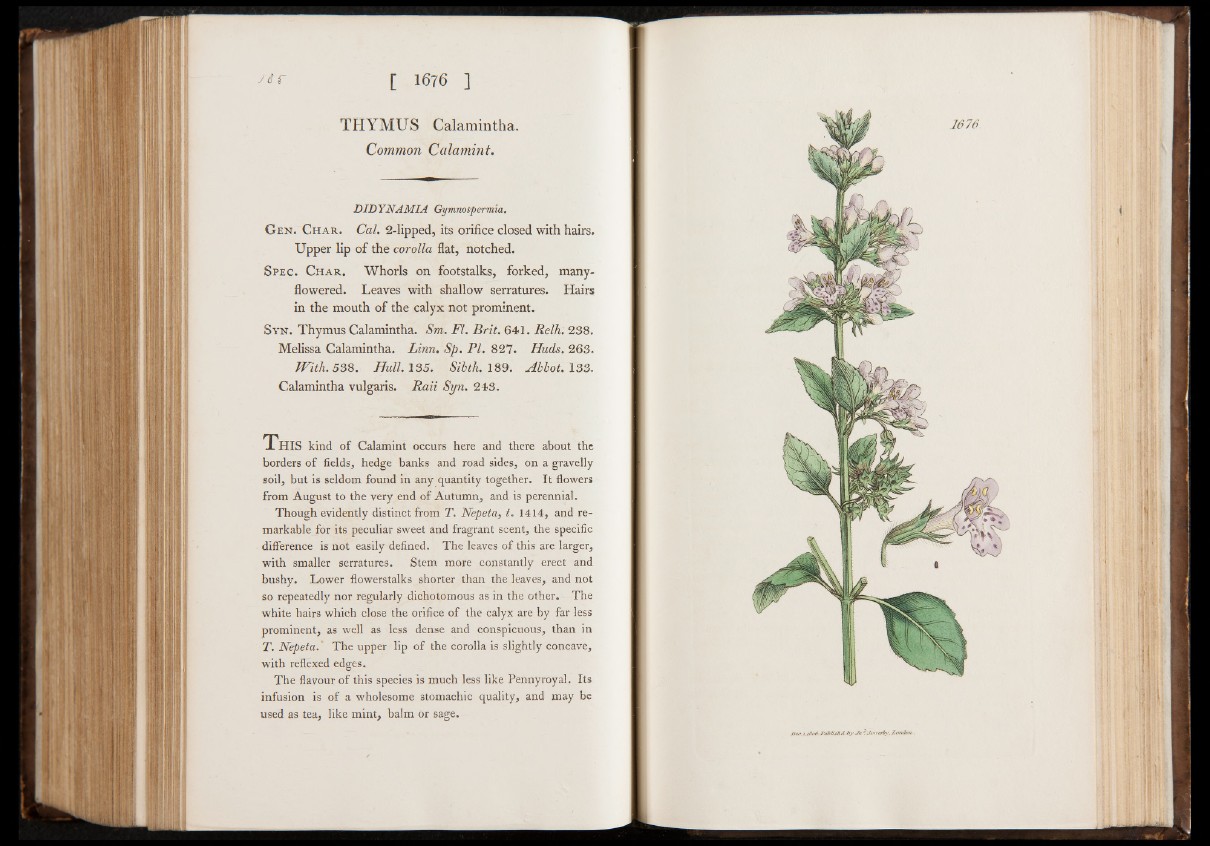
yrfr [ 1 6 7 6 ]
THYMUS Calamintha.
Common Calamint.
DIDYNAMIA Gymnospermia.
G en. C h ar. Cal. 2-lipped, its orifice closed with hairs.
Upper lip of the corolla flat, notched.
S pec. Ch ar. Whorls on footstalks, forked, many-
flowered. Leaves with shallow serratures. Hairs
in the mouth of the calyx not prominent.
Syn . Thymus Calamintha. Sm. FI. Brit. 641. Relh. 238.
Melissa Calamintha. Linn. Sp. PI. 827. Huds. 2 6 3 .
With. 538. Hull. 135. Sibth. 189. Abbot. 133.
Calamintha vulgaris. Raii Syn. 2 4 3 .
T h i s kind of Calamint occurs here and there about the
borders of fields, hedge banks and road sides, on a gravelly
soil, but is seldom found in any quantity together. It flowers
from August to the very end of Autumn, and is perennial.
Though evidently distinct from T. Nepeta, t. 1414, and remarkable
for its peculiar sweet and fragrant scent, the specific
difference is not easily defined. The leaves of this are larger,
with smaller serratures. Stem more constantly erect and
bushy. Lower flowerstalks shorter than the leaves, and not
so repeatedly nor regularly dichotomous as in the other. The
white hairs which close the orifice of the calyx are by far less
prominent, as well as less dense and conspicuous, than in
T. Nepeta.' The upper lip of the corolla is slightly concave,
with reflexed edges.
The flavour of this species is much less like Pennyroyal. Its
infusion is of a wholesome stomachic quality, and may be
used as tea, like mint, balm or sage.